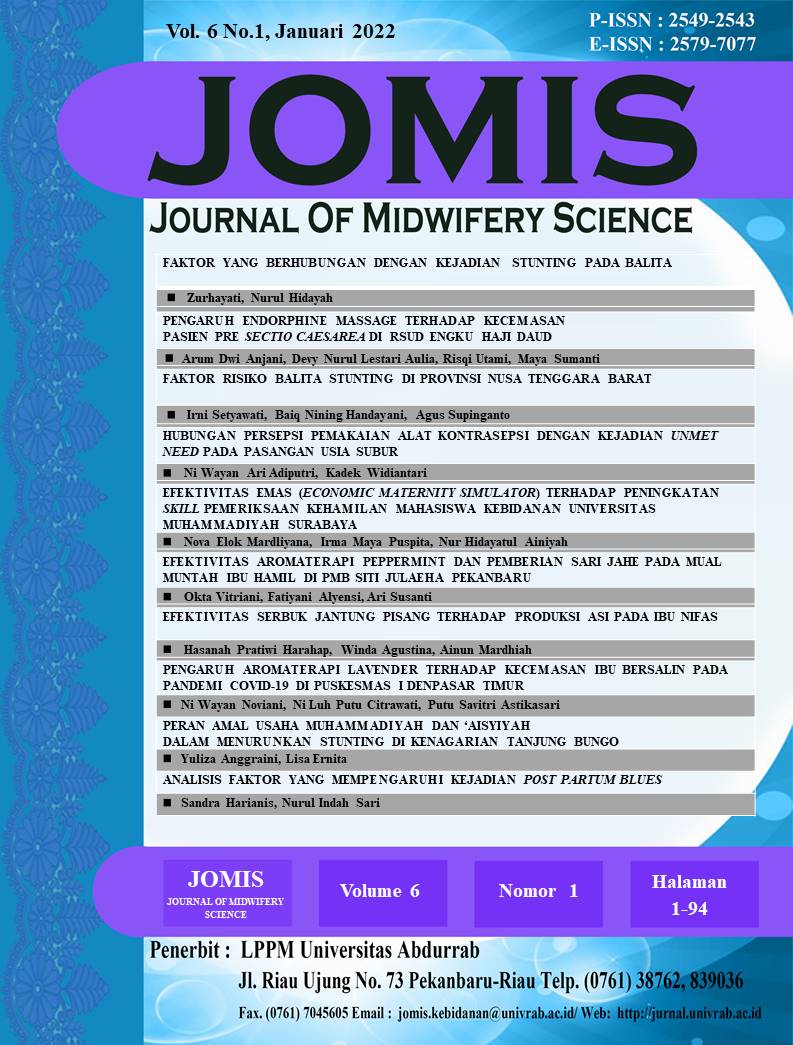HUBUNGAN PERSEPSI PEMAKAIAN ALAT KONTRASEPSI DENGAN KEJADIAN UNMET NEED PADA PASANGAN USIA SUBUR
Abstract
The high incidence of unmet need for family planning is where there are various perceptions about contraceptives that become the basis for a person to be afraid to use contraceptives and this can also make the number of unmet need high. The design of this study was analytic observational with a cross-sectional approach. The population in this study were all couples of childbearing age in the Denpasar City area for the period of 2020 and the number of samples in this study amounted to 96 couples of childbearing age using the proportional stratified random sampling technique. Data was collected by distributing online questionnaires and the data analysis technique used was the Chi-Square test. The purpose of this study was to determine the relationship between perceptions of contraceptive use and the incidence of unmet need for family planning in couples of childbearing age. The results of this study found that there was a relationship between perceptions of contraceptive use (p=0.477) and the incidence of unmet need for family planning in couples of childbearing age. The results of this study are expected to be a reference to help increase the coverage of contraceptive use in the Denpasar City area.
Copyright (c) 2022 JOMIS : Journal of midwifery scinece

This work is licensed under a Creative Commons Attribution-NonCommercial-ShareAlike 4.0 International License.
1. Copyright of all journal manuscripts is held by the JOMIS : Journal of midwifery scinece
2. Formal legal provisions to access digital articles of electronic journal are subject to the provision of the Creative Commons Attribution-ShareAlike license (CC BY-NC-SA), which means that JOMIS : Journal of midwifery scinece is rightful to keep, transfer media/format, manage in the form of databases, maintain, and publish articles.
3. Published manuscripts both printed and electronic are open access for educational, research, and library purposes. Additionally, the editorial board is not responsible for any violations of copyright law.
licensed under a Creative Commons Attribution-ShareAlike 4.0 International License.
 PDF
PDF
 Abstract views: 352
Abstract views: 352
 downloads: 411
downloads: 411

 :
:





